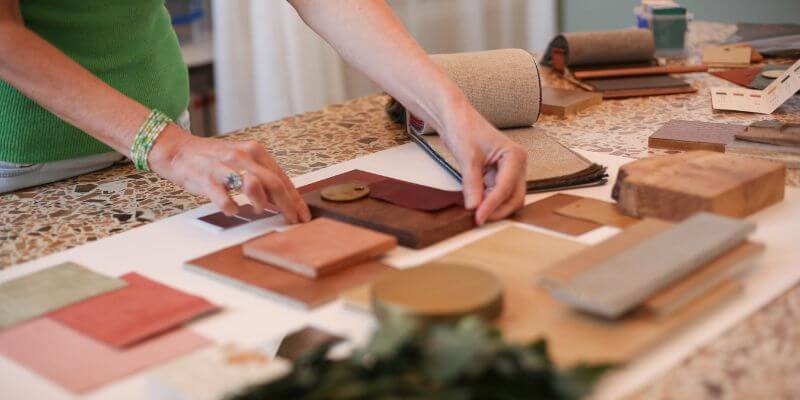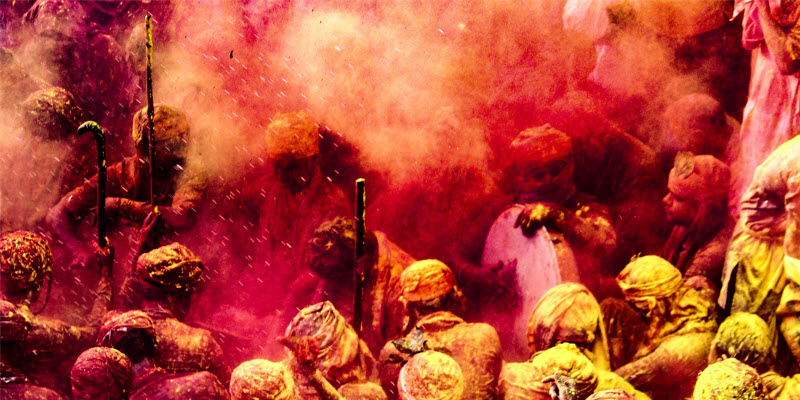Colour, it’s in our nature

Karen Haller

There’s nothing like the buzz of Clerkenwell Design Week which was last week. It takes place annually in the Clerkenwell district of London, which is renowned for its concentration of design studios, architecture firms, and creative businesses.
I love attending because it showcases the latest trends and innovations in the design industry, with a particular focus on furniture, lighting, and interior design. It brings together designers, architects, manufacturers, and design enthusiasts from around the world to explore and celebrate design excellence.
Usually at Clerkenwell Design Week you’d find me giving a colour psychology talk or running a workshop, but this year I took the opportunity to be in the audience. I love learning and hearing other perspectives, so it was a real treat to listen to the many talks and panel discussions.
And the red-hot topics were these three: colour, biophilic design and sustainability. I was thrilled to hear colour psychology being mentioned as often as it was, which shows it’s making inroads into the everyday design language.
As part of the lead up to Clerkenwell Design Week, I wrote an article for Art of Design magazine and it reflected the hot topics of the moment because my article was all about colour, biophilic design and sustainability.
I know people are really interested in these topics right now, and here’s why I think for the future of design, we really need to be having conversations about these three things in tandem.
I’m sure you have noticed the trend in green architecture has definitely done a great job of decreasing the environmental impact of the built environment. So much so that green walls, pot plants and wood have now become a shorthand for biophilic, nature-led design.
But it’s so much more than that.
What we’ve been seeing as ‘green architecture’ is just one expression of nature, and one of a range of nature-based ways we can express ourselves.
Why just limit ourselves to green when we have nature’s colour palettes at our disposal?
Back to nature is the future of design
Most humans love being in nature. It’s why we sit in the park at lunch, go for a walk in the woods, or swim in the sea when we get the chance. We have a subconscious connection to it and innately know that nature restores, grounds and supports us.
But with so many of us now living in high-density urban environments, we can really miss that connection.
That’s why nature-led design is so powerful. It allows us to create this connection to nature by using harmonious colour combinations, textures, patterns, and shapes that reflect that subtle experience of being in nature.
The best part is that nature has already provided everything we need with colour palettes and designs that resonate with our personality and help us to feel that sense of familiarity that we do when out in nature.
Because when we use nature’s colour palettes and designs in their purest form, we are surrounded by harmony and balance. When we don’t use them as nature intended, that’s when we can feel uncomfortable in a space because something feels ‘off’ or jarring.
As our society evolves to include even more technology, AI and denser urban living, it will become more important than ever before to bring that connection to nature into the built environment.
“Every step we take away from nature we move further away from ourselves and what it means to be human.”
Why? Because every step we take away from nature we move further away from ourselves and what it means to be human. And I’m sure you’d agree that’s bad for our mental health and our wellbeing.
Bringing nature into our designs is how we can support people now, and into the future, to find that balance between modern living and what it is to be human, so they can feel safe, secure and thrive in our busy, urban environments.
And we can lead the way by putting humans at the centre of our designs and by using colour consciously to create spaces, places and environments that are good for the individual, for others and the planet.
To find out more how to use colour consciously for nature-led design head over to https://karenhaller.com/free-10-myths-ebook/.
An extract of this article first appeared in the Art of Design magazine’s Clerkenwell Design Week special edition 2023.


